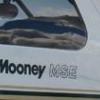What maximum amount of full crosswind do you land
What maximum amount of full crosswind do you land your Mooney in ?
14 members have voted
-
Members Online
- Crawfish
- Reek778
- Bartman
- Fritz1
- Aerodon
- redbaron1982
- atpdave
- Ragsf15e
- nickowen5
- wstull87
- N201MKTurbo
- mccdeuce
- Parker_Woodruff
- banjo
- Rwsavory
- Justin Schmidt
- Lax291
- mluvara
- AspiringOwner
- IvanP
- DonMuncy
- rbmaze
- Flyler
- Pictreed
- mgan
- Matthew P
- DC_Brasil
- gabez
- lamont337
- EricJ
- philiplane
- PilotX
- DMM
- LANCECASPER
- exM20K
- Mark Staggs
- Bondo
- DXB
- Schllc
- BrettD


Recommended Posts